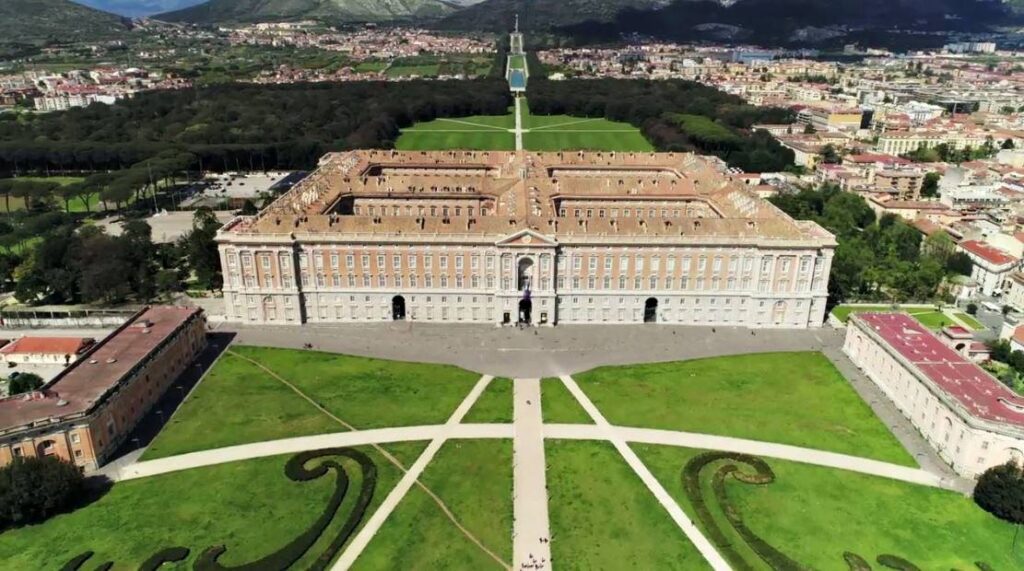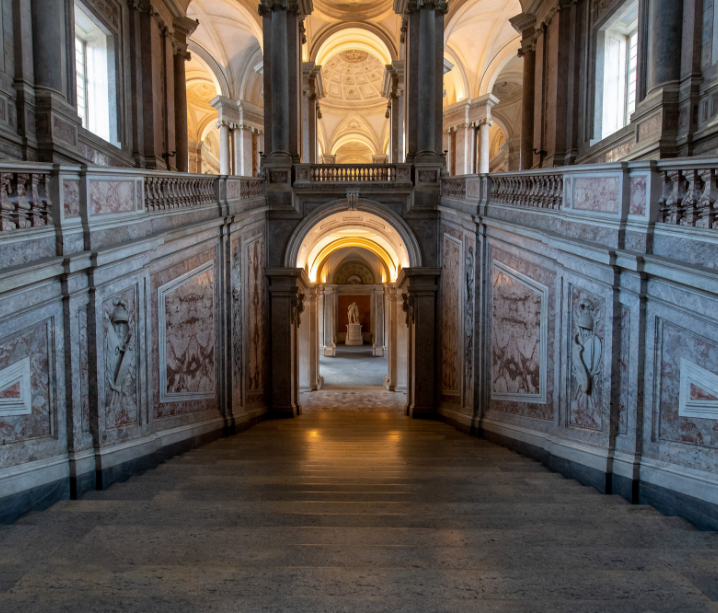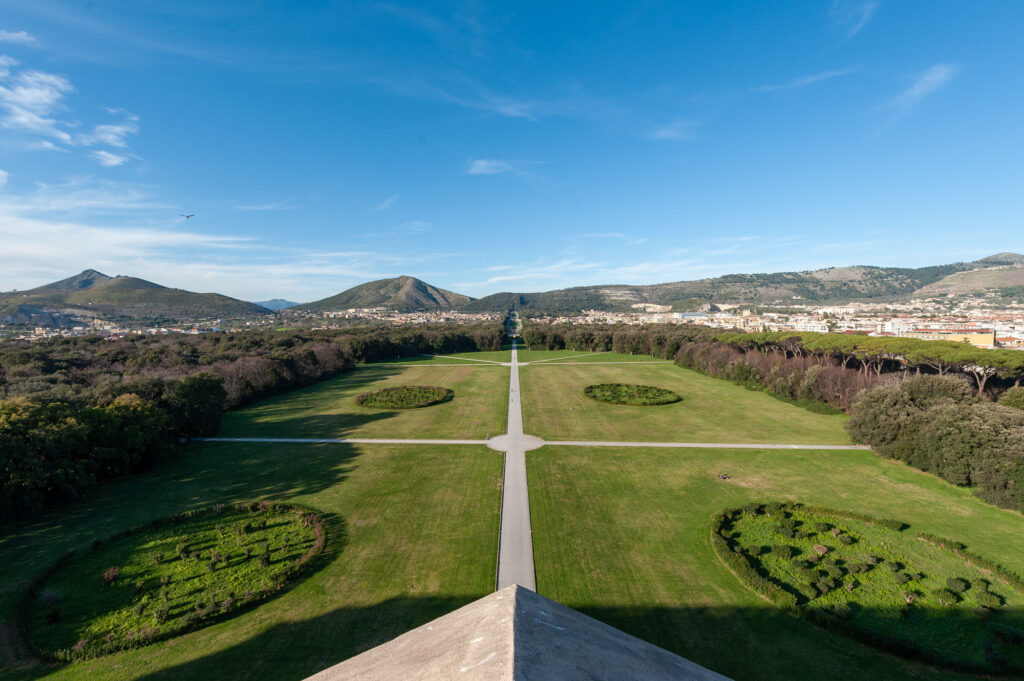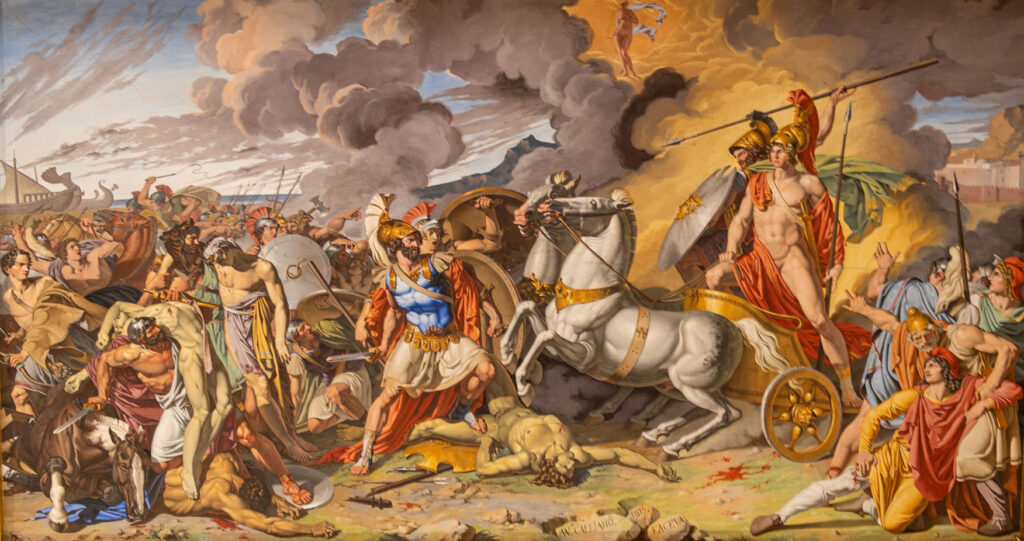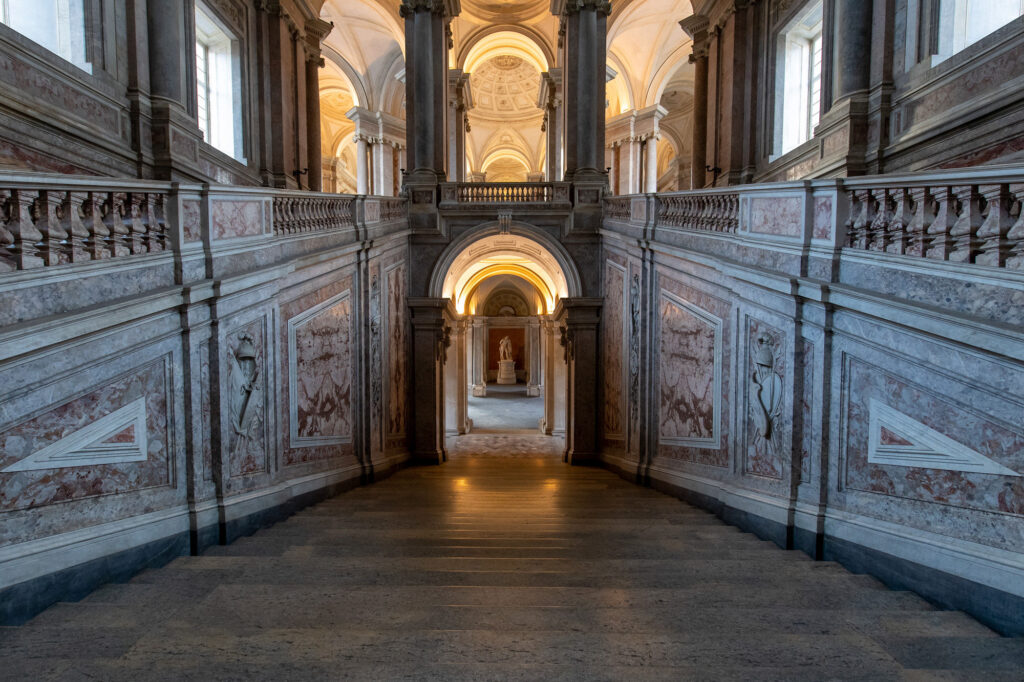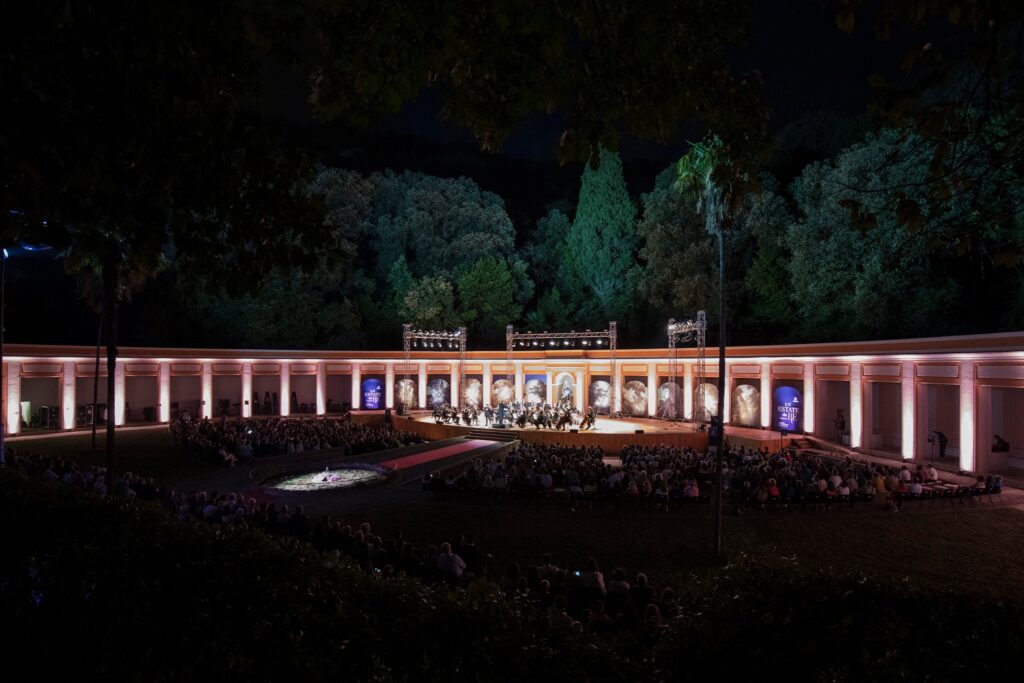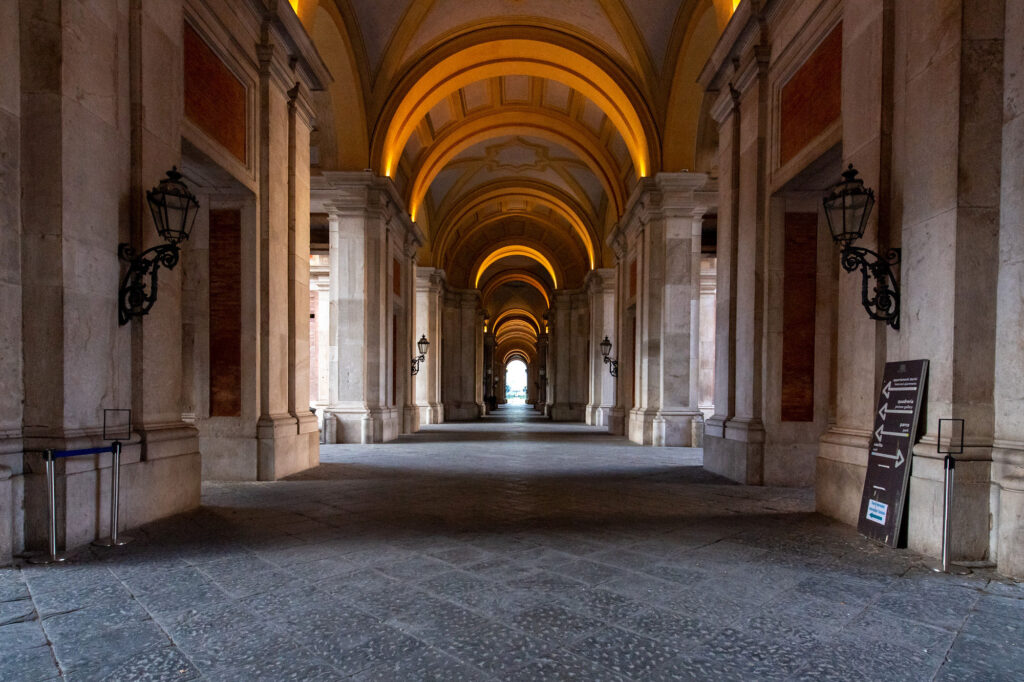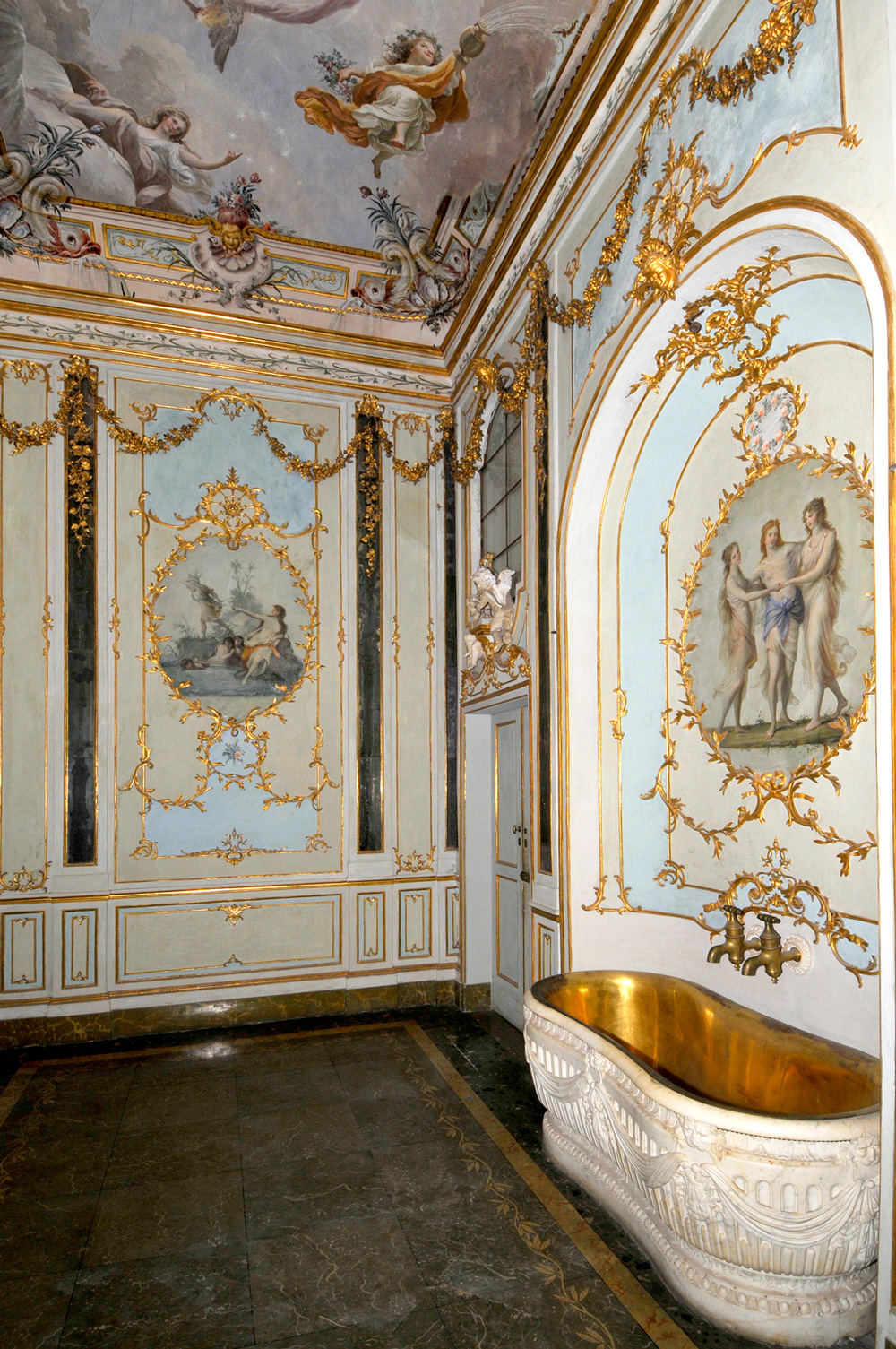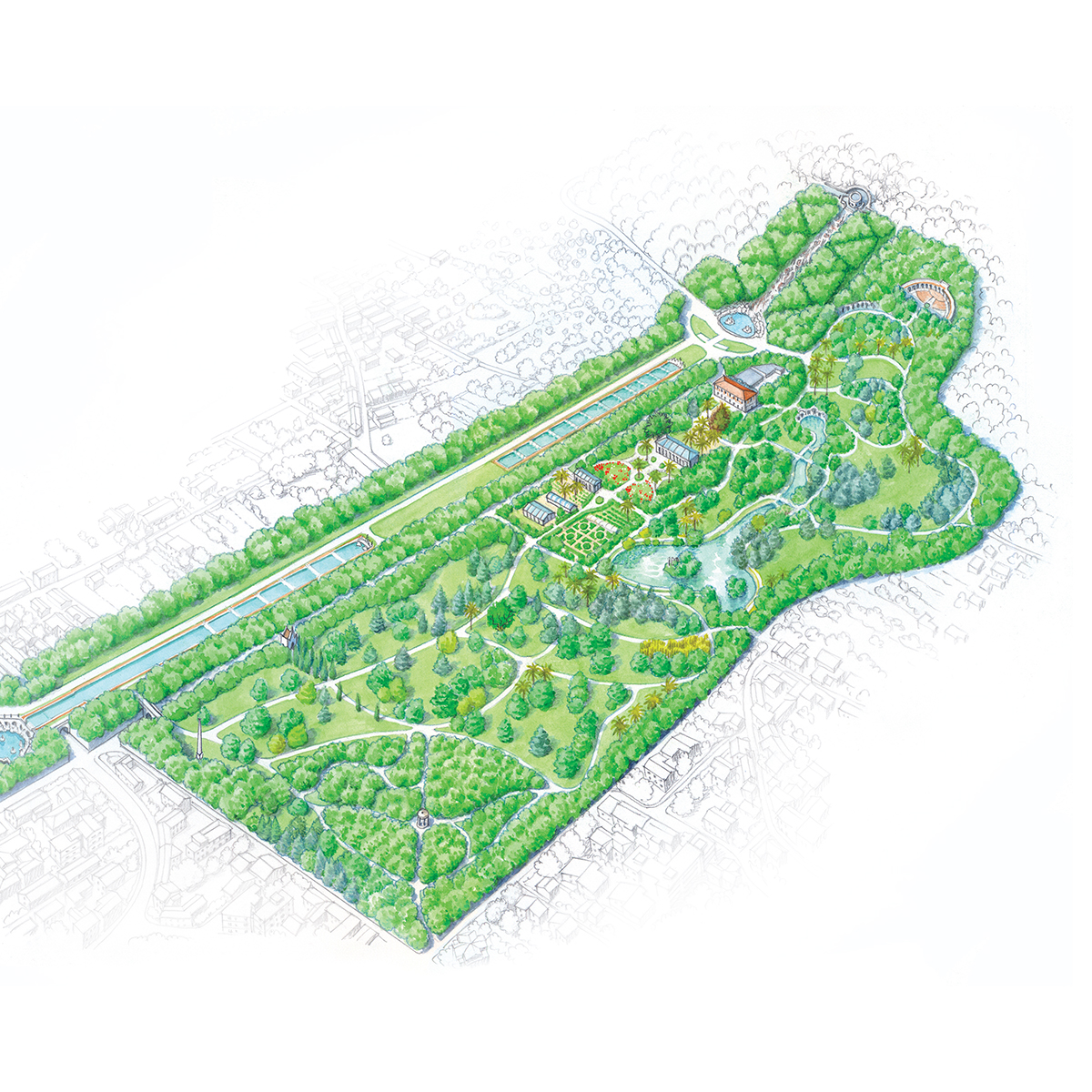The Queen’s most intimate space
Maria Carolina’s boudoir is made up of four interconnected rooms, intended for dressing tables and embroidery. Built between 1780 and 1782 under the direction of Carlo Vanvitelli, the boudoir, a place of female vanity, is decorated with an exuberant rocaille taste, in contrast with the severe neoclassical style of King Ferdinand’s rooms.
The decorations are a triumph of mirrors and stuccos, thanks to the best craftsmen working at the Royal Palace of Caserta, including Gennaro Fiore and Bartolomeo Di Natale.
On the vault of the Toilet, Fedele Fischetti paid homage to the queen with a fresco inspired by the Toilet of Venus.
For her private space, Maria Carolina wanted to surround herself with every comfort: the gold-laminated bathtub is equipped with hot and cold water taps. Here one finds one of the first bidets in Italy placed in a niche, made in mahogany and gilded bronze. In the nearby Toilet used by the Ristretto, there was no shortage of marble hand basins and a real toilet with a drain, of which only the structure still remains today.

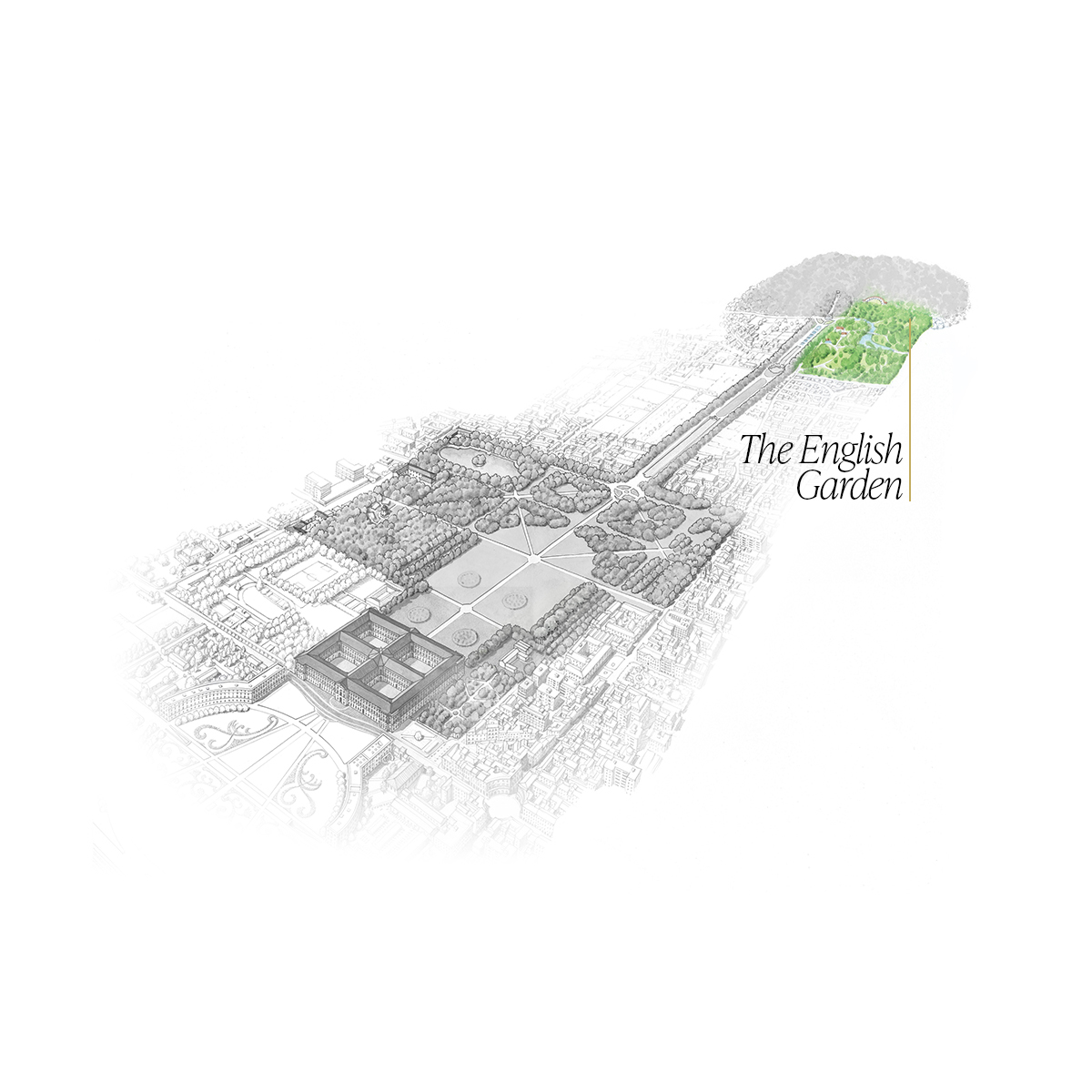
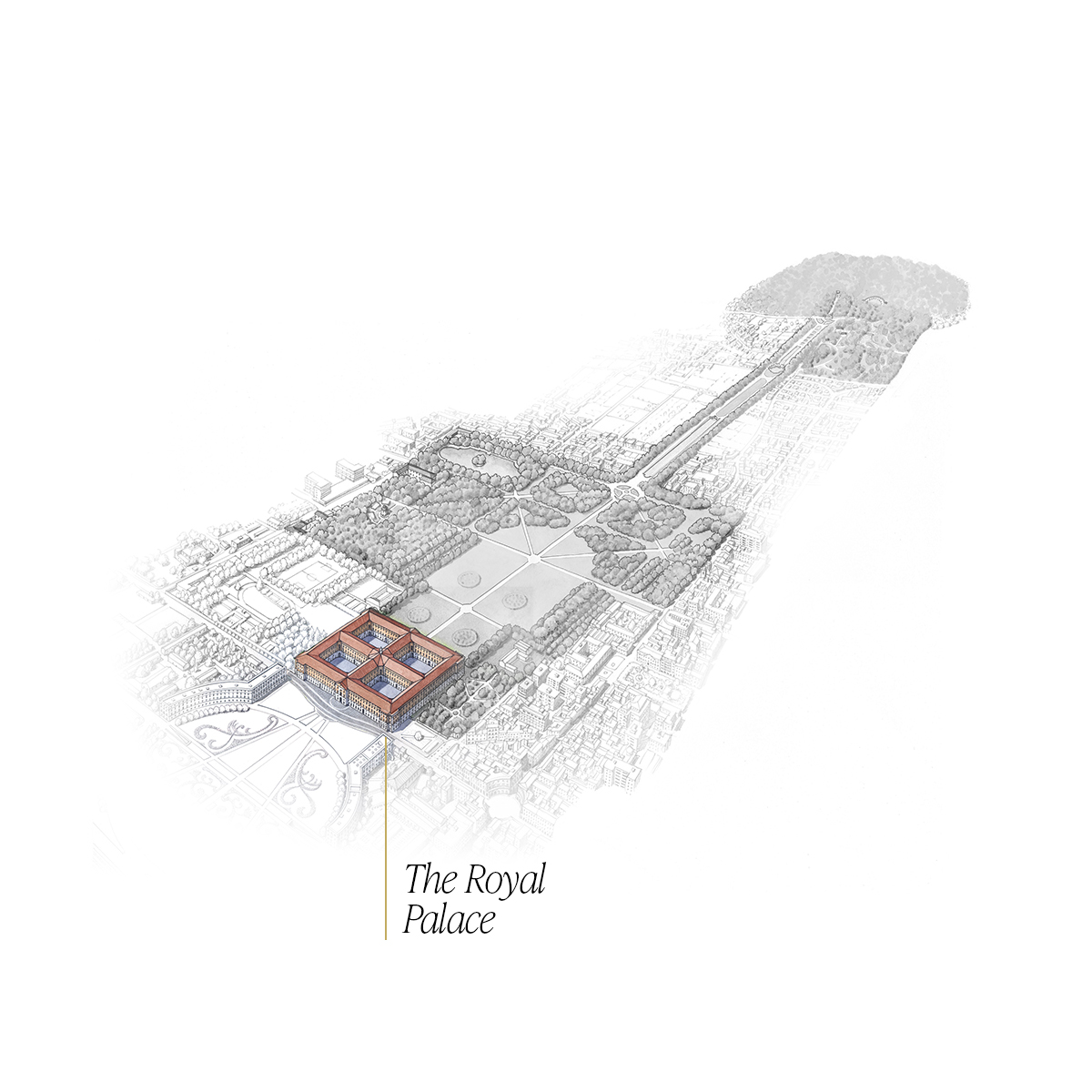
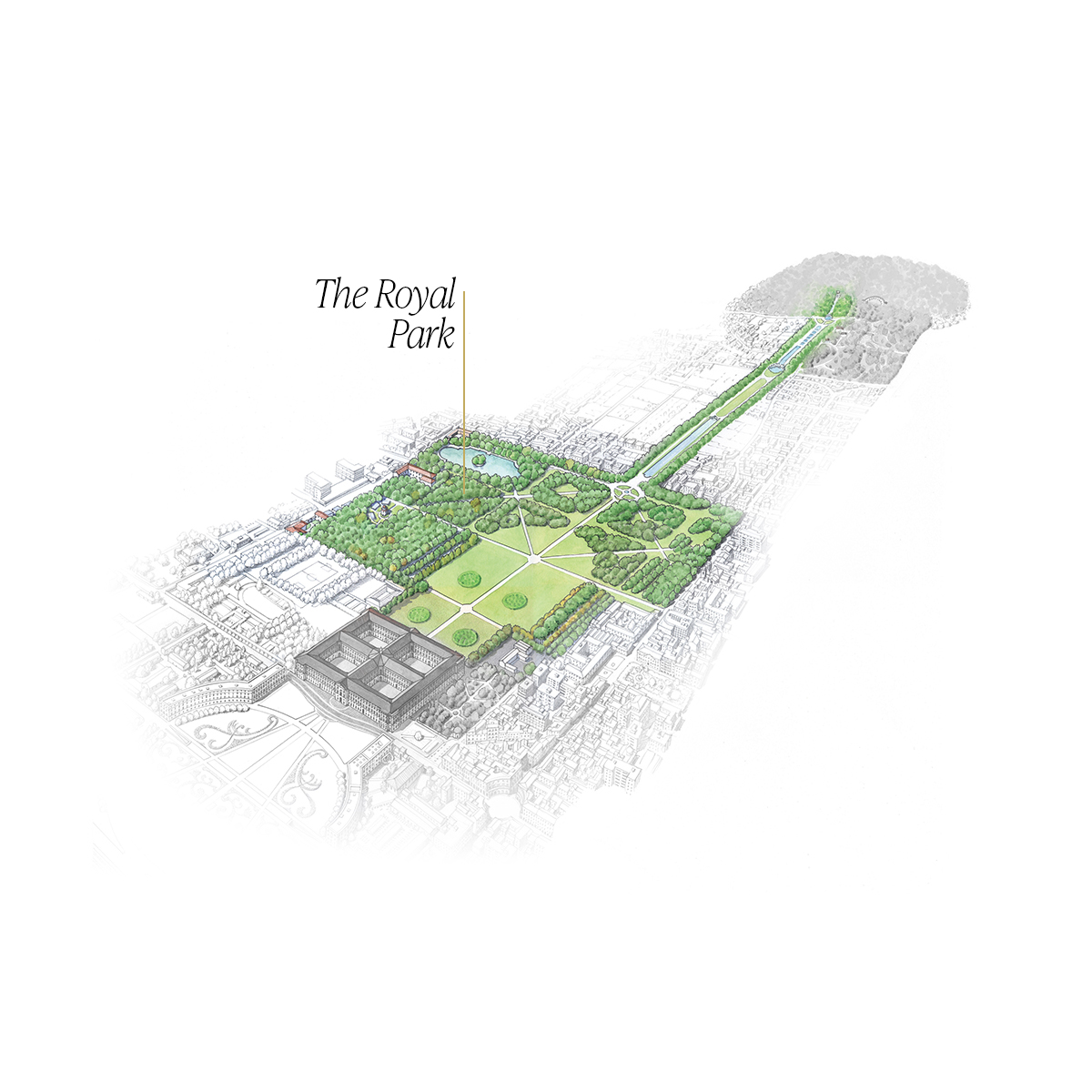
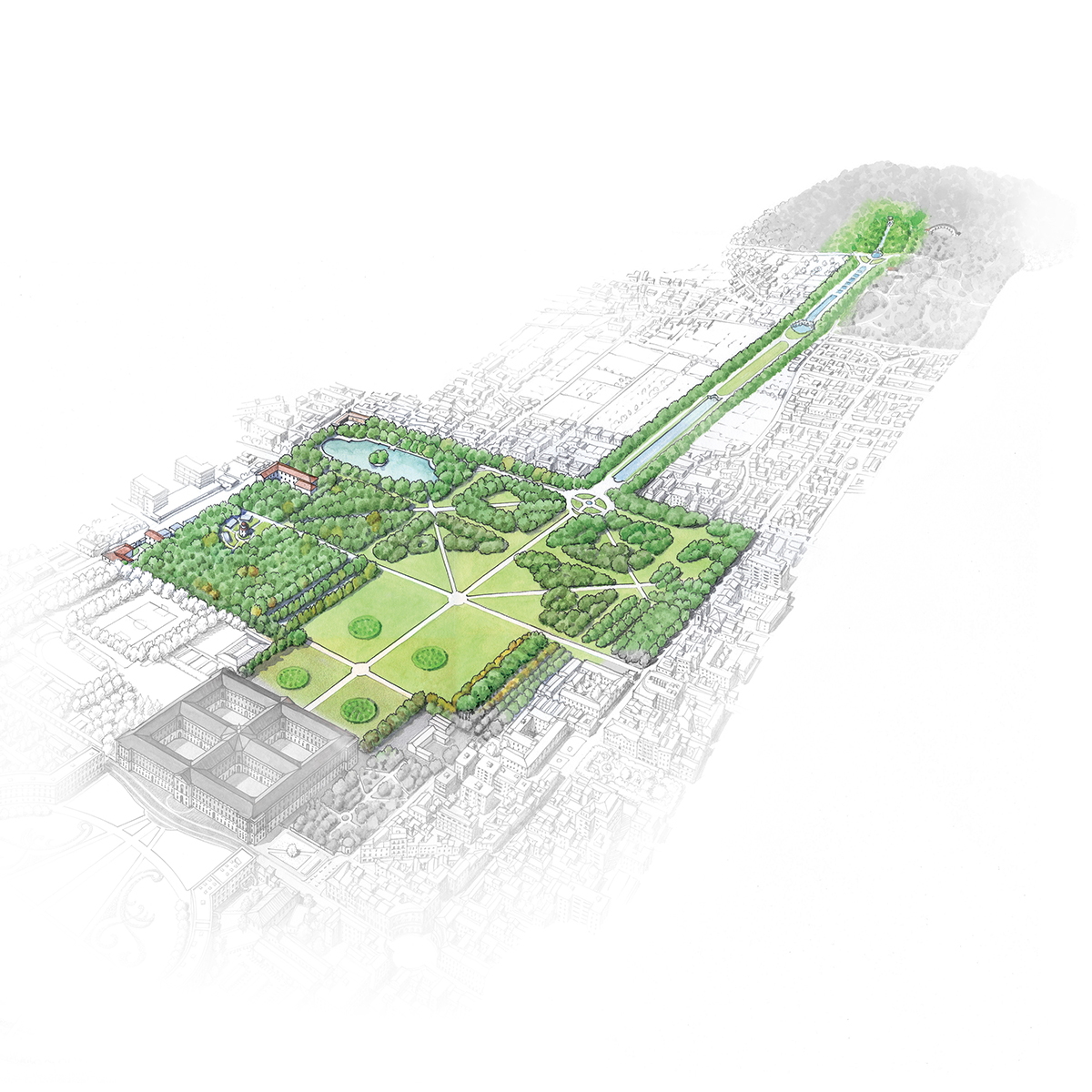
 Via d'acqua
Via d'acqua Castelluccia
Castelluccia Peschiera
Peschiera The Fountain of Dolphins
The Fountain of Dolphins The Fountain of Aeolus
The Fountain of Aeolus The Fountain of Ceres
The Fountain of Ceres The Fountain of Diana and Actaeon
The Fountain of Diana and Actaeon The Fountain of Venus and Adonis
The Fountain of Venus and Adonis The waterfall and Torrione
The waterfall and Torrione The Bosco Vecchio (Old Wood)
The Bosco Vecchio (Old Wood) The Margherita Fountain
The Margherita Fountain





